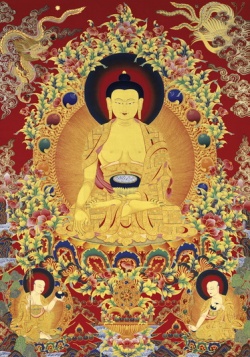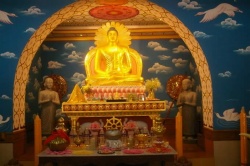Upayoga
Buddhist teaching Nyingma into nine progressively superior groups and subdivides the tantras in a manner different from that of other Vajrayana schools. The six groups of tantras are: Kriya, or ritual; Upayoga, which involves the convergence of the two truths and meditation on the pentad of buddhas; Yoga, which involves the evocation of the god, the identification of the self with the god
Upa Yoga is a simple yet powerful system of exercise that activates the joints, muscles and energy system. Based on a sophisticated understanding of the body’s mechanics, Upa Yoga releases the inertia in the energy and brings ease to the whole system.
Within the human system, the energy flows along 72,000 pathways called nadis. At the joints, the nadis form energy nodes, making the joints storehouses of energy. Upa Yoga activates this energy and also lubricates the joints, creating an instant sense of alertness and liveliness.
Upa Yoga essentially means “sub-yoga” or “pre-yoga”. Because of its many immediate and evident benefits, the word Upa Yoga in Indian languages is commonly used to denote “usefulness.”
Upa Yoga has several benefits:
Relieves physical stress and tiredness
Exercises the joints and muscles
Rejuvenates the body after periods of inactivity
Negates the effects of jetlag and long travel

